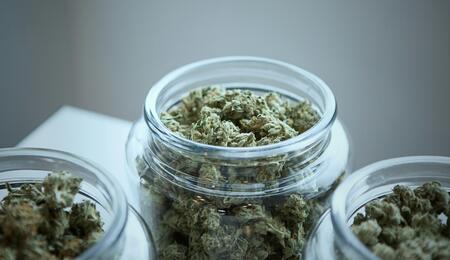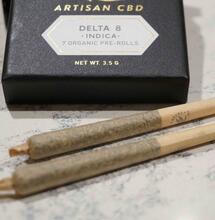What Gives Cannabis its Smell?

Many different scents are apparent when you smell cannabis, from floral to fruity or earthy. We all have our favourites, but one thing is for sure, weed should smell strongly and distinctly like a weed, no matter what more nuanced aromas are present.
What, exactly, is this distinctive “weed smell” though? Is it established from a strain having high terpene content, or a certain mix of terpenes? Or is there more to it?
What are terpenes?
Terpenes are aromatic compounds found in the essential oil of cannabis plants, typically considered to be the main basis of the scent. Whilst they are a primary element no single cannabis terpene has that strong weed smell. Myrcene is an earthy scent, limonene is fresh citrus, and pinene smells like... well, pine. None of them smell particularly skunky.
The usual rationale given for this is that our sense of smell is complex and that the intense weed smell must be made up of a complex collection of terpenes working in synergy together.
An alternative rationale is that the intense skunky smell does not materialise from terpenes but from some additional class of volatile compounds called VSC's that might be produced by Cannabis.
VSC's in nature
Skunks are notorious for the strong-smelling spray they use to defend themselves. This “skunk” odour is suggestive of the sharp aroma that is typically associated with cannabis. This odour originates largely from Volatile Sulfur Compounds (VSCs) VSCs are highly volatile, and these incredibly potent–minuscule amounts can be smelt easily by the nose.
Volatile Sulfur Compounds are responsible for the pungent scent of plants including hops and garlic and are also present in Cannabis.
Which strains have the highest VSC content?
The concentration of cannabis VSCs varies dramatically from strain to strain. Strains with high VSC content are the most pungent, including various Gelato and OG strains.
VSCs are a distinct category of chemical compounds separate from terpenes however VSC content does seem to be associated with terpene profiles. In a study by Leafly, partnered with the University of Colorado, tens of thousands of strain samples were analysed for their terpene profiles.
Three major “superfamilies” of high-THC cannabis cultivars were found and categorised based on their terpene profiles. One of these families, distinguished by high levels of terpinolene, also tends to have low VSC content. This includes many “Sativa” strains like Jack Herer, “Golden” strains like Golden Pineapple, and also Lemon Haze.
Cannabis strains with higher levels of things like β-caryophyllene and limonene which encompasses a wide range of strains from Gelato, GSC, GG4 and most OG strains all tend to have higher VSC levels.
A recent study also discovered that the VSCs in cannabis appear to peak when Cannabis flower has been dried and cured and falls off very quickly after that point, even faster than terpene content can fade. This could clarify why the distinctive aroma of dried cannabis fades so fast without being carefully stored. It also explains why it's possible to gauge the freshness of weed by its smell alone.
Do VSCs have psychoactive effects or medical value?
It is not currently known whether cannabis VSCs influence the psychoactive effects of cannabis or if they have any medical value. As they exist at such low levels, they have been overlooked in large part until recently. Defining their medicinal properties and experimenting with whether they add to the psychoactive or therapeutic effects of cannabis is an important area for future research.
More From Soft Secrets:







